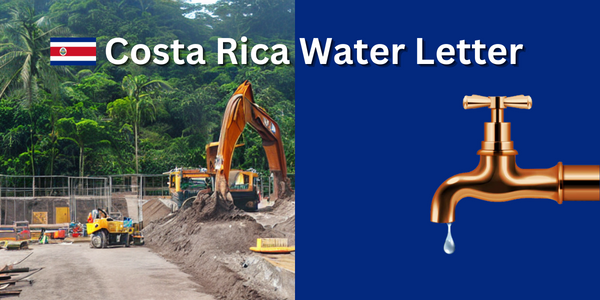Construction Requirements Water Letter Costa Rica
The Importance of Construction Requirements such as a Water Letter in Costa Rica
Costa Rica has seen a significant increase in construction projects in recent years as a rapidly developing country, thus increasing the demand for the water letter. From residential developments to commercial buildings, the demand for construction is at an all-time high. However, with this increase in demand comes the need for strict adherence to construction requirements to ensure the safety and well-being of all those involved.
Understanding Costa Rica’s Construction Requirements
Costa Rica has a set of guidelines and regulations in place for all construction projects, both big and small. These requirements cover everything from building design and materials to safety measures and environmental impact. All builders and developers must understand and comply with these requirements to avoid delays and fines.
The first step in adhering to Costa Rica’s construction requirements is obtaining the necessary permits and approvals. This includes getting a building permit from the Ministry of Housing and Urbanization and obtaining the required environmental impact assessments.
Building Design and Materials
A crucial aspect of construction requirements in Costa Rica is the design and materials used in building construction. All facilities must comply with the country’s building codes, which outline specific requirements for structural design, fire protection, and energy efficiency. In addition, builders must use materials approved by the Costa Rican Institute of Standards (INTECO) to ensure their durability and safety.
Safety Measures
Ensuring the safety of all those involved in construction projects is of the utmost importance. Costa Rica’s construction requirements include strict safety measures to protect workers, residents, and the surrounding community. These measures include regular inspections, emergency evacuation plans, and fire safety systems.
Environmental Impact
In addition to safety and building design, Costa Rica’s construction requirements also consider the environmental impact of construction projects. Developers must conduct environmental impact assessments to determine the potential impact of their project on the surrounding ecosystem and take necessary steps to mitigate any adverse effects.
What is a Water Letter?
The Costa Rican Institute of Acueductos y Alcantarillados (AyA), or the regional Asociaciones administradoras de los Sistemas de Acueductos y Alcantarillados comunales (ASADA) are the two suppliers of water to all properties on the grid in Costa Rica.
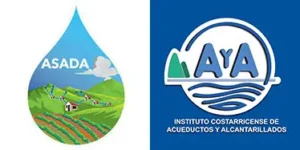
Since these two government entities own all the water in Costa Rica, there should be enough. As you may already be aware, that is only sometimes the case, especially in the Guanacaste province, which is notoriously prone to droughts. Although it is a tropical and humid country, Costa Rica can experience water shortages, especially in the dry season. During these droughts, water use can be restricted, and it is even possible that your service may be halted for a few hours of the day.
A “Carta de Agua” is the local term for a water letter and is a certification from AyA or the ASADA confirming the presence of drinkable water resources on the land.
When assessing properties, a land buyer should take multiple variables into account. If they intend to develop, they should ensure that the lot has access to all necessary services, such as water, electricity, and internet. But in Costa Rica, land with a water letter is considered a wildlife reserve because it is likely that you will be able to develop something soon since the water letter is necessary to secure building licenses. When you buy your lot, it might have a current water letter, but by the time you’re ready to start building, you could have run out of time. Make sure to look at the dates on the water letter, as they can expire and may not be able to be renewed, causing months or even many years of delay for your construction. Water letters are typically administered for six to twelve months. During this time, it is necessary to get the building permits in order and not to be squandered.
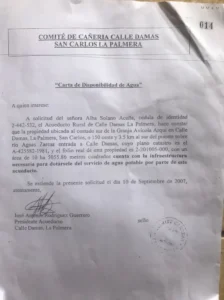
Where Do Gated Communities Fit In?
What if I purchase a home in a gated neighborhood with a water system? Please let me know if that is good enough. Possibly, but you ought to double-check. In Costa Rica, several apartment buildings were separated ten or twenty years ago. The developer excavated wells, constructed roads, and put in electricity. Anyone who purchased a lot in the development was permitted to connect to the shared water, which was piped throughout it. The Tico Times reports that on September 1, 2014, a new law in Costa Rica changed the uncomplicated system. Since then, more than simply having water on your property has been required. A water letter is also needed to secure a building permit. Existing construction is exempt from the new regulation; however, seeking a building permit for an expansion is subject to it.
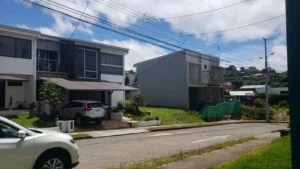
Are there any workarounds for a water letter?
The first alternative is to employ a rainwater collection system or utilize a river or creek that passes through the property. The water source can be registered and given a water concession if it has a sufficient flow all year round and is of adequate drinking quality. This is a complex process to achieve and will need a lot of persistence and legal counsel. Before you can obtain a water concession on your land via this method, expect a 1–2-year process.
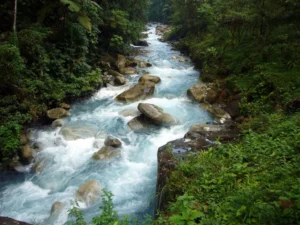
A hand-dug well is another option. It cannot be situated within 15 meters of another well or building, and the maximum depth allowed is 21 meters. This solution can only support one home, but it is a good fallback because it’s arguably the quickest and easiest alternative way to get a water concession, but it could still take years.
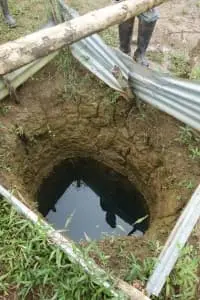
There is one catch for those residing in Guanacaste since water is a scarce resource in that area, the authorities frequently reject these alternative approaches. Therefore, they are usually not even thought of as optional.
Conclusion
Strict adherence to Costa Rica’s construction requirements is essential for completing any construction project. From obtaining the necessary permits and approvals to adhering to building design and safety guidelines, builders and developers must understand and comply with these requirements to ensure the safety and well-being of all involved.
Please always do your research before you purchase a home in Costa Rica. Suppose you wish to build on a Lot. In that case, it needs a letter from AyA or an ASADA confirming the availability of water in addition to a source of potable water to achieve your building permits. Additionally, if you purchase a site with a water concession, it is safest to start construction as soon as possible before the allotted time runs out.
-Written by Glenn Tellier (Founder of Grupo Gap)
+506 8500-2085
[email protected]
Need Real Estate in Costa Rica? – Contact us here!
Need a loan? – Click HERE.
Want to invest? – Click HERE.
Looking for a Residency in Costa Rica? – Click HERE.
Ready for a Relocation Tour? – Click HERE.

